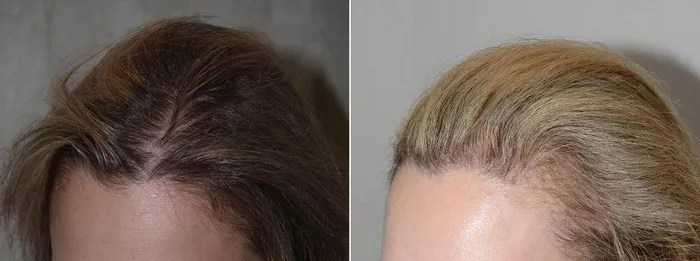In today’s world, image and self-confidence play a pivotal role in one’s personal and professional life. And for many individuals grappling with a receding hairline, the prospect of a hair transplant is an attractive solution. However, before embarking on this journey towards hairline restoration, it’s crucial to understand the cost implications and the various factors that can influence the overall expense. In this comprehensive guide, we’ll explore how much a hair transplant for a receding hairline costs, breaking down the factors that contribute to the final price.
1. The Initial Cost of a Hair Transplant
The initial cost of a hair transplant for a receding hairline can vary significantly depending on several factors:
a. Location Matters: The geographic location of the clinic or surgeon can have a substantial impact on the cost. For example, clinics in metropolitan areas tend to charge higher fees compared to those in smaller towns or rural areas.
b. Clinic Reputation: Highly reputable clinics or surgeons, with a proven track record of successful hair transplant procedures, generally charge higher prices. It’s important to balance the cost with the quality of service to ensure a successful outcome.
c. Hair Transplant Technique: Different hair transplant techniques, such as Follicular Unit Transplantation (FUT) and Follicular Unit Extraction (FUE), come with different price tags. FUE, which is less invasive and leaves minimal scarring, tends to be pricier.
d. Experience of the Surgeon: An experienced and skilled surgeon may charge more for their services. However, their expertise can significantly impact the success of the procedure.
e. Number of Grafts Required: The extent of hair loss and the number of grafts needed will directly affect the overall cost. A larger area to cover will require more grafts, thus increasing the price.
See Also: How to Sleep After a FUT Hair Transplant: Essential Tips
2. Additional Costs to Consider
Here are additional costs to consider:
a. Consultation Fees: Most clinics charge a consultation fee for the initial assessment. This fee can vary, so it’s essential to inquire about it beforehand.
b. Medication and Post-Operative Care: Post-transplant care often includes medications and specialized shampoos to promote healing and hair growth. These additional costs should be factored into your budget.
c. Multiple Sessions: Depending on the extent of hair loss and the chosen technique, multiple sessions may be required. Each session incurs additional costs, so it’s essential to plan for this possibility.
d. Travel and Accommodation: If you need to travel for your procedure, don’t forget to account for travel expenses and accommodation costs.
3. Financing Options
The cost of a hair transplant for a receding hairline can be substantial, but there are various financing options available to make it more affordable:
a. Healthcare Financing: Many clinics offer financing plans that allow you to pay for the procedure in manageable installments.
b. Medical Tourism: Some individuals opt for medical tourism, traveling to countries where hair transplants are more cost-effective. However, it’s essential to research and ensure the clinic maintains high medical standards.
c. Insurance Coverage: In most cases, hair transplants are considered elective procedures and are not covered by insurance. However, it’s worth checking with your provider to confirm.
4. Maximizing the Value of Your Investment
To ensure you get the best value for your investment, consider these essential tips:
a. Choose an Experienced Surgeon: Research and select a surgeon with a solid track record and extensive experience in hair transplants. A skilled surgeon can achieve better results and minimize the risk of complications.
b. Follow Post-Operative Care Guidelines: Adhering to the post-operative care guidelines provided by your surgeon is crucial for a successful outcome. Proper care will expedite healing and encourage hair growth.
c. Maintain Realistic Expectations: Understand that a hair transplant may not provide immediate results. It can take several months for the transplanted hair to grow in fully.
d. Invest in Quality Care: While it’s tempting to seek the lowest cost option, it’s vital to prioritize quality and safety over price. Remember that a poorly executed transplant can lead to unsatisfactory results and additional expenses for correction.
5. Success Stories and Statistics
To provide you with additional insights, let’s look at some success stories and statistics related to hair transplants for receding hairlines:
a. According to the International Society of Hair Restoration Surgery (ISHRS), the global hair restoration market is projected to grow steadily in the coming years, indicating a growing demand for these procedures.
b. Many individuals who undergo hair transplants report increased self-esteem and confidence, which can positively impact both their personal and professional lives.
c. High-profile celebrities like Wayne Rooney and Elon Musk have openly discussed their experiences with hair transplants, contributing to the growing acceptance of the procedure.
In conclusion
The cost of a hair transplant for a receding hairline can vary widely depending on multiple factors. To make an informed decision, it’s essential to research and consult with experienced surgeons. While the price may seem steep, the boost in self-confidence and the potential to regain a full head of hair make it a valuable investment for many individuals. Remember to prioritize quality and safety in your journey toward a more confident you.


